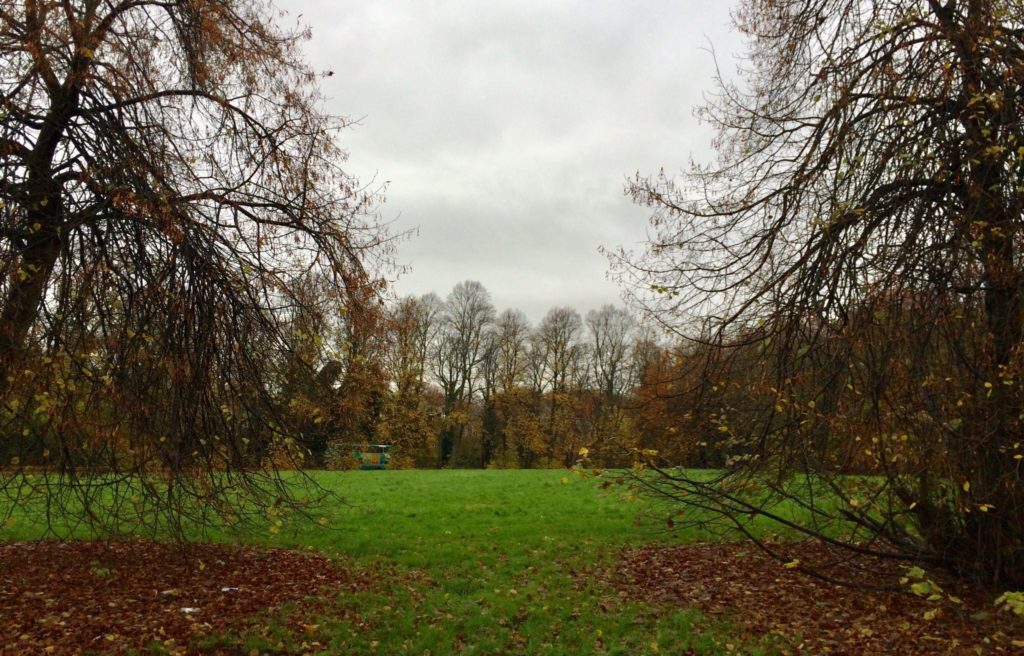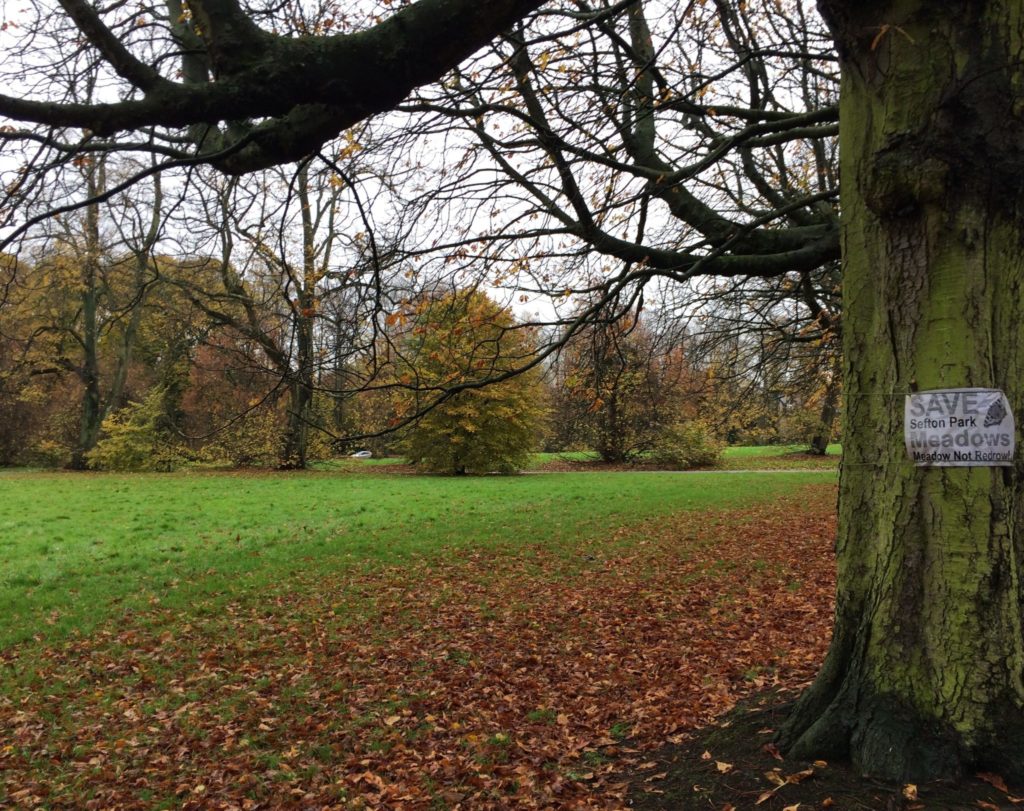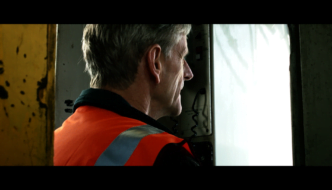
It is just after dawn. I stare at the bark of a tree where a pair of initials hover either side of a crudely carved heart. I wonder how old the carving is. Surely this form of loving declaration has now been replaced by some cold technological equivalent. The carving is faded enough so that, at first glance, the G could be a C, and the heart could be an M, so I suspect it has been there for quite a while. I consider whether the love which the carving represents has endured, or whether it has similarly faded.
The tree I am staring at is one of many that stand along the border of Sefton Park Meadows, a pair of middling greenspaces situated just outside Sefton Park, one of the largest and busiest parks in Merseyside. The row of trees encircling the meadows has for several years been affixed with laminated signs reading: “Save Sefton Park Meadows”, the name a campaign group set up in 2013 to prevent Liverpool City Council selling off the land to building developers.
Like many cities across the UK, Liverpool has a huge housing problem, so on the surface a new development might have seemed palatable. However, when it became clear that the plans were to build 34 ‘executive homes’ on the site, the controversy surrounding Sefton Park Meadows spiralled. These audacious plans speak to the wider housing issue in Liverpool, where the creation of social housing has plummeted. Between 2012 and 2018 the number of social rent homes built each year dropped from 873 to 49, with the definition of ‘affordable’ housing being stretched further and further, and there is no doubt that public dismay around housing played a role in galvanising support for the Save Sefton Park Meadows campaign.
Regardless of the kind of housing proposed, there would be untold environmental and ecological harm caused by transforming the meadows into a building site. Construction is an incredibly wasteful and pollutive industry, and though seemingly sparse, the meadows are an undisturbed haven for wildlife, having been noted as a rare nesting ground for sparrowhawks. The proposed development plans, including the felling of 27 trees, would have undoubtedly caused great damage to the various ecologies of Sefton Park Meadows and other nearby areas.

I watch the morning brightening through the gaps in the trees. Sefton Park is bathed in silver light over the road that divides the stretches of grass. On a whim, I step across the deserted road and enter Sefton Park proper. The park is rarely so quiet and peaceful, just a few joggers and dog walkers making their early morning rounds. Glancing back, I still see the outline of the meadows and the fragments of its autumn-yellow trees. It is the only area bordering Sefton Park which provides this extension of greenery, a slow fade into suburbia, rather than the abruptness of brick.
There have been numerous reports detailing the benefits of green urban areas. From increased physical and mental wellbeing, to the amelioration of air pollution, the importance of greenspaces goes far beyond the aesthetic. Worryingly, The Green Space Index found that over 2.5 million people lack access to greenspaces in the UK. This is why campaign groups like Save Sefton Park Meadows are so important; if communities allow developers to build on vaguer spaces like the meadows, it opens the door for councils to sell off more distinct parklands. This was the case with Calderstones Park in Liverpool, where there were plans to build 51 luxury homes over 13 acres of the park. Fortunately, in 2019 the High Court ruled in favour of the Save Calderstones Park campaign group, and the plans were dropped.
Save Sefton Park Meadows has had similar success. Following growing public support, helped in part by an endorsement from Kim Catterall (Samantha from Sex and The City) which brought national interest to the campaign, Joe Anderson, the universally despised though somehow continually re-elected Mayor of Liverpool, was pressured into reversing the decision to allow developers to build on the meadows. The protection of greenspaces may seem like a niche political concern, but the accomplishments of these various campaign groups highlight the power of communities over unscrupulous councillors and business interests, and the recognition of this power is vital in nurturing truly democratic politics.
I walk on through Sefton Park until the meadows have completely faded into the horizon. The park is beginning to fill up with people. As I walk past the tennis courts and the coffee shop, it strikes me that Sefton Park is a place where people often come for a particular purpose, such as the numerous festivals that take place over the summer, whereas the neighbouring meadows are rather more abstract. Yes, people use the meadows for picnics and walking the dog, or even as a place where one lover can carve the initials of another into a tree, but ostensibly it is a zone of no defined purpose, a place that just exists, and that seems like a very valuable thing.
Filed under: Community
Tagged with: activism, capmaign, greenspace, liverpool, meadow, park, sefton park, sefton park meadows



Comments